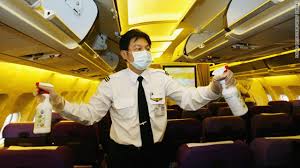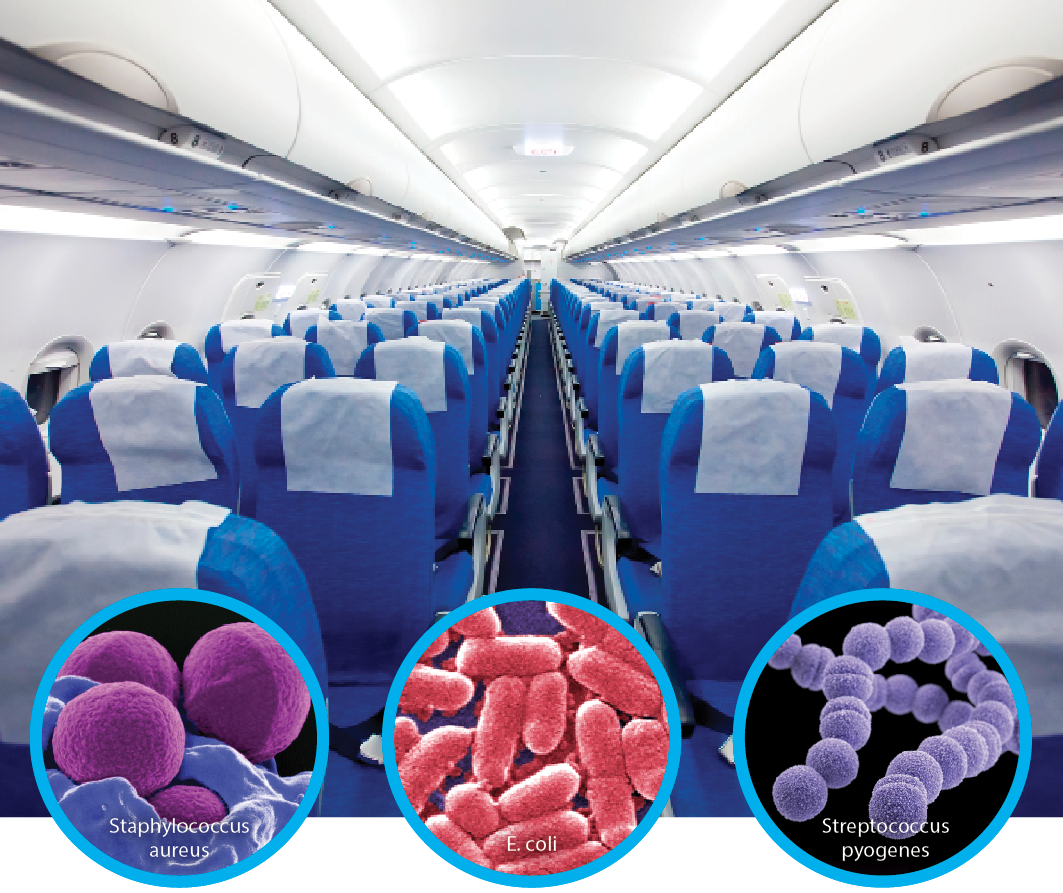 Q – There seems to be a lot of nonsense written about the best places to sit on an aircraft. Some say it is safer in the rear of the aircraft, some say the exit row, some say an aisle up front. I really don’t care about safety or an accident in the air. No worries there. What my husband and I do care about is contacting e-coli and the best place to sit to avoid the most contact. We take one or two international vacations a year and I am always worried about catching something in that filthy environment. My niece is a flight attendant and she has stories that just curl my hair. Just wondering if there is any evidence on this subject you could share with your followers? Is coach really much worse than Business Class or First? Is Premium Economy better than Economy in terms of germ count?
Q – There seems to be a lot of nonsense written about the best places to sit on an aircraft. Some say it is safer in the rear of the aircraft, some say the exit row, some say an aisle up front. I really don’t care about safety or an accident in the air. No worries there. What my husband and I do care about is contacting e-coli and the best place to sit to avoid the most contact. We take one or two international vacations a year and I am always worried about catching something in that filthy environment. My niece is a flight attendant and she has stories that just curl my hair. Just wondering if there is any evidence on this subject you could share with your followers? Is coach really much worse than Business Class or First? Is Premium Economy better than Economy in terms of germ count?
A – There really is some hard evidence on this subject. One of the nation’s most prominent researchers in the field of getting sick on an aircraft is Charles Gerba an environmental microbiologist at the University of Arizona. Gerba specializes in just how diseases spread through indoor spaces like planes, cruise ships, and casinos. There was an important study about the transmission of viruses aboard commercial aircraft at a recent meeting of the National Academy of Sciences. We have seen some of the research and it is rather complex with many variables in terms of the type of aircraft, cost per ticket, number of passengers aboard, time of year, destination, etc. All the variables you would expect. But we want to answer your question as best we can in layman’s terms and based solely on our understanding of the research, allow us to offer the following summary:
01 – The so-called “two-row” rule is largely a myth. Infectious viruses can easily affect those seated beyond a two-row perimeter of a contaminated person. Movement about the plane is the most critical factor in terms of exposure to e-Coli and other serious bacterial infections.
02 – Ai sle seats are generally the worst place to sit in terms of contamination. There are several reasons why. Those in aisle seats tend to get up from their seats more often than those in a window or middle seats. That places them in contact with a higher percentage of the aircraft’s passengers. The crew has a staggering number of close contacts compared to seated passengers so infected crew member can easily spread disease within a confined space. Those in aisle seats have their seat arms and headrests touched by numerous fellow passengers who are going to and from the lavatory, a prime source of infection.
sle seats are generally the worst place to sit in terms of contamination. There are several reasons why. Those in aisle seats tend to get up from their seats more often than those in a window or middle seats. That places them in contact with a higher percentage of the aircraft’s passengers. The crew has a staggering number of close contacts compared to seated passengers so infected crew member can easily spread disease within a confined space. Those in aisle seats have their seat arms and headrests touched by numerous fellow passengers who are going to and from the lavatory, a prime source of infection.
03 – Tray tables are the single greatest source of contamination, with armrests and seat headrests as other areas of high bacteria concentration. No one should ever be seated on a commercial aircraft without first using sanitizing wipes or liquid to clean all surfaces where one would be eating or placing one’s hands or head. It is important not to touch your eyes when you fly. Use tissues to open and flush lavatory doors.
04 – Never use airline pillows. They are thrown into the overhead racks which are laden with bacteria from shoes and the bottom portions of luggage. Only use airline blankets to cover your feet.
05 – Those in window seats face the lowest threat of infection from infectious diseases.
06 – The internal cleaning of airline seats and lavatories is supposed to occur about every 100 hours of flying. But this service is usually outsourced and cleaning crews are under tremendous pressure to clean cabins quickly for a quick turn-around. The practical result is that planes are rarely cleaned. Instead, “cleaners” clean out seat backs and collect garbage. Do not imagine that the seats and the TV screens, along with other surfaces you might touch are cleaned regularly.
07 – For those who are prone to infection for any reason or those who have a concern about cleanliness, it is always recommended that seating in the forward part of the plane be considered. Business and First Class seating is cleaned more often and the air quality is generally far superior.
And that, ladies and gentleman, is why we have never been asked to create an airline commercial.
